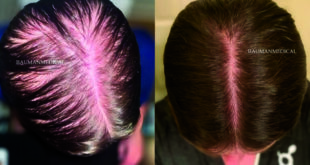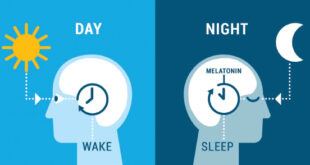 It’s hard to imagine sometimes, that children or young adults can suffer from anxiety. What do they have to be worried about? Without careers, bills, mortgages, and financial or family responsibilities, their lives are simple and easy.
It’s hard to imagine sometimes, that children or young adults can suffer from anxiety. What do they have to be worried about? Without careers, bills, mortgages, and financial or family responsibilities, their lives are simple and easy.
The truth is that anxiety is a pattern of neuron firing in the brain that can be present from birth. Brain neural patterns don’t necessarily dictate how we will behave, however, trying to change the environment or behavior won’t alter the patterns. Therefore, you can’t talk someone out of anxiety. And for children and young adults, you can’t change their routines or discipline them from feeling anxious.
In babies and infants, anxiety neural patterns in the brain may present as:
Colic
Fussiness
Not a good sleeper
Tantrums
Sensitive
As a child gets older into the toddler years it may present as:
Terrible two’s, three’s, and four’s
A spirited child
Cranky, fussy, and not a good sleeper or napper
Tantrums
Picky or sensitive
Difficulty with separation
I know what you are thinking. These symptoms are normal for children this age. And you are correct; they are perfectly normal, developmental behaviors for infants and toddlers. This is why diagnosing anxiety in young children is very difficult and not usually done unless symptoms are severe. In most cases, anxiety manifests at an older age when the symptoms are abnormal for the age or stage of development. And even then, parents tend to want to attribute what they observe to behavioral, personality or social causes.
“She didn’t study for her test and that is why she’s refusing to go to school today”. “He’s unmotivated to do anything except play video games and that is why his stomach hurts all of the time and he sleeps all day’”. “She just has too many activities scheduled and that’s why she’s overwhelmed”. “He has too much homework and is up all night studying which explains why he doesn’t sleep well”.
The reality of the situation is that neither your child’s personality nor their hectic schedule is the culprit. It’s their brain, or rather, the neural patterns in their brain, that is not allowing them to handle the workload at school, pressure with friends, feeling good, making good food choices, having a normal sleep schedule, and so on. And to make it even harder to diagnose or differentiate, anxiety patterns can look different but produce the same results.
Here is an example of one type of anxiety pattern. Increased BETA and High BETA is located in the central and frontal lobes. This could cause anxiety symptoms that range from OCD, anger control issues, irritability and impulsivity, poor judgement, excessive worrying, feelings of being overwhelmed and depressed, among others.
Very often, we contribute anxiety to traumatic events. As in the case of PTSD (Post-Traumatic Stress Disorder). Therefore, it becomes difficult to recognize the early symptoms of anxiety in children who haven’t experienced a traumatic event. However, as mentioned previously, these neuron firing patterns can be present from birth and may not have a root or cause in emotional or physical trauma. It’s a pattern in the brain that they are born with.
As a child reaches school age,anxiety may look like:
Worrying about performance, grades
Worrying about parents or loved ones dying
More separation anxiety
Fear of getting sick (vomiting is most popular)
Fear of getting sick at school
Social anxiety, difficulty with friends
Feeling overwhelmed
Nightmares or unable to sleep/fall asleep alone
Sleep walking, talking or restless sleep
Fatigue
Refusal to go to school or meltdowns
when going to school
Frequent trips to the clinic
Vocal or motor tics
Loss of appetite or poor diet
Somatic symptoms such as stomachaches, headaches, diarrhea, or digestive problems
Poor grades usually due to missing school
or falling behind
As they reach the teenage and young adult years, the problem can become more apparent and more severe:
Continued worry and difficulty handling traumatic events
Dropping out of extra-curricular activities
More social interaction difficulties or isolation
Depression, suicidal or homicidal ideations
Poor choices when confronted with life decisions (drugs, alcohol, sex)
Beginning to develop dysfunctional coping skills or self-medicating
Poor school performance/ failing classes, suspensions or expulsions
Poor conduct: lying, stealing, violence
Onset of panic attacks
Continued somatic symptoms and fluctuation in weight (gain/loss)
Manifestation into other anxiety disorders such as: Obsessive-compulsive Disorder, Eating Disorders, Trichotillomania, PICA, Body Dysmorphic Disorders, Phobias, Panic Disorders, Addiction, Social Anxiety, Performance Anxiety, etc.
According to The Anxiety and Depression Association of America, “Anxiety and depression are treatable, but 80 percent of kids with a diagnosable anxiety disorder and 60 percent of kids with diagnosable depression are not getting treatment, according to the 2015 Child Mind Institute Children’s Mental Health Report.”
Many health professionals believe that anxiety is a normal part of childhood and symptoms are not cause for alarm. Others believe that parenting and discipline need to be improved or implemented to treat the symptoms. In severe cases, medication is introduced as a treatment, but unfortunately, many children who suffer with symptoms, are medication resistant or not severe enough to medicate.
Neurofeedback can help. Neurofeedback can not only help reduce the anxiety symptoms specific to your child, but it can “retrain” the neural patterns in the brain so that anxiety is better managed or controlled throughout your child’s life. Through Neuroplasticity, Neurofeedback becomes a permanent correction of the anxiety patterns in the brain.
What is Neurofeedback?
Neurofeedback, also known as EEG biofeedback, has been studied and practiced since the late 60’s. It is exercise for your brain; allowing you to see the frequencies produced by different parts of your brain in real-time and then through visual and auditory feedback, teaches the brain to better regulate itself. Neurofeedback can be used to help detect, stimulate, and/or inhibit activity in the brain safely and without medication. It can help restore a wider “range of motion” in brain states, much like physical therapy does for the body.
While the client sits comfortably watching a movie or pictures appear on the screen (a calm and focused state), the EEG equipment measures the frequency or speed at which electrical activity moves in the areas where electrodes have been placed. This information is sent to the therapist’s computer. The therapist is then able to determine what frequencies are out of balance. For example, when the EEG shows that you are making too many “slow” or “sleepy” waves (delta/theta) or too many “fast” waves (high beta), the therapist adjusts a reward band to encourage more balanced activity. This encouragement or “reward” happens through an auditory reinforcement of “beeps” and sometimes through visual reinforcement of changes on the screen.
What types of conditions does neurofeedback help?
Symptoms of these conditions, among others, can improve through neurofeedback training:
• Anxiety • Sleep disorders • Depression • ADD/ADHD • Sensory processing disorder • Bipolar disorder
• Seizure disorders • Auditory/visual processing
• Chronic pain/Fibromyalgia • Migraines/headaches
• Traumatic brain injuries • Stroke • Cognitive decline
• Peak performance • Oppositional defiant disorder
• Rages/mood swings • Attention/focus/concentration • Reactive attachment disorder • Autism/Asperger’s
• Learning disabilities • Obsessive compulsive disorder
What is aQEEG (Quantitative EEG) or brain map?
The QEEG is a quantitative EEG. It’s also called a brain map and does just that…it gives us a map of what is going on with the entire brain at one time. We attach electrodes to the whole head, 19 spots, and then record the brain waves with eyes open for 5 minutes and with eyes closed for 10 minutes. This recording is then sent to an independent specialist be read and analyzed. They are able to not only give us a summary of significant findings but the report also shows the results of analyzing the data several different ways. The brain activity is not only compared spot by spot over the entire head, but we can also look at connections, symmetry, how different parts are communicating and all of this data is compared to a database of peers (same sex, handedness and age). It can help us see what areas need to be addressed more efficiently than just training spot by spot.
We don’t always need this data to make improvements in symptoms but we do recommend it in
certain situations. A QEEG can also be helpful information when diagnosing and/or trying to decide the best medication/supplement recommendations.
Is there enough research?
Neurofeedback has been researched since the 60’s. Here are some resources for research. We have several journal articles, studies and books in our office for you to enjoy, however because of the amount of information out there, we cannot possibly have everything. Here are a few resources.
Look up the work of:
Dr. Joe Kamiya and Dr. Barry Sterman (Credited for earliest development of Neurofeedback).
Look for specific researched conditions:
https://www.eeginfo.com
https://www.isnr.org
Print Resources:
Journal of Neurotherapy
Neuroregulation
Applied Psychophysiology and Biofeedback
A Symphony in the Brain: The Evolution of the New Brain Wave Biofeedback (Curtain Up) Paperback –
31 May 2001 by Jim Robbins.
Healing Young Brains: The Neurofeedback Solution Paperback – 15 May 2009 by Robert W. Hill, Eduardo Castro.
How do I get started?
Getting started is easy, just give us a call. The Brain and Wellness Center staff will answer all of your questions, and help you get scheduled. If you are wondering what services are best for you? We can help determine that at the time of the intake, in a telephone consultation, or you can schedule a face to face consultation and see our facility. Call, email or message us today! Brain and Wellness Center, 7301 W. Palmetto Park Rd., Suite 102A, Boca Raton, FL 33433, e-mail us at
info@bocabraincenter.com, or text us at (561) 206-2706 or visit our website at www.BocaBrainCenter.com.
 South Florida Health and Wellness Magazine Health and Wellness Articles
South Florida Health and Wellness Magazine Health and Wellness Articles




